Kashikojima Island in Mie Prefecture has become a more familiar name since it hosted the G7 summit in 2016. The secluded island, believed to be the “residence of gods,” is an ideal place to hold such events. It is the largest island in Ago Bay, and was designated as Ise-Shima National Park in 1946. Its naturally indented ria coastline and authentic panoramic picturesque have fascinated writers and artists of all times and is a place where emperors have spent their vacations.
A four-hour trip to Kashikojima Station from Tokyo might make you hesitant, but enjoying the views and a lunch box on a 90-minute shinkansen ride to Nagoya make it a piece of cake, and from Nagoya, the two-hour rapid Kintetsu line ride isn’t a drag as you may suppose. Thanks to free wi-fi throughout the trip, it’s handy time for working, too.
Once you get to Kashikojima, the staff of Teisho Basaratei ryokan (in my case the general manager herself) awaits you, holding a name plate, then kindly guide you to a comfortable van for a five-minute ride to the accommodation.

Set on a hill, the entrance gate to the adults-only Teisho Basaratei welcomes you into a world of greenery and fresh air. Guests are served with tea and sweets in the lobby where you get a dazzling view of Ago Bay with no buildings to ruin the vista. A ryokan employee led me to my room along a passage through the courtyard, passing many villa doors next to a koi pond. The ryokan consists of seven types of 15 standard rooms and three villas in the annex.

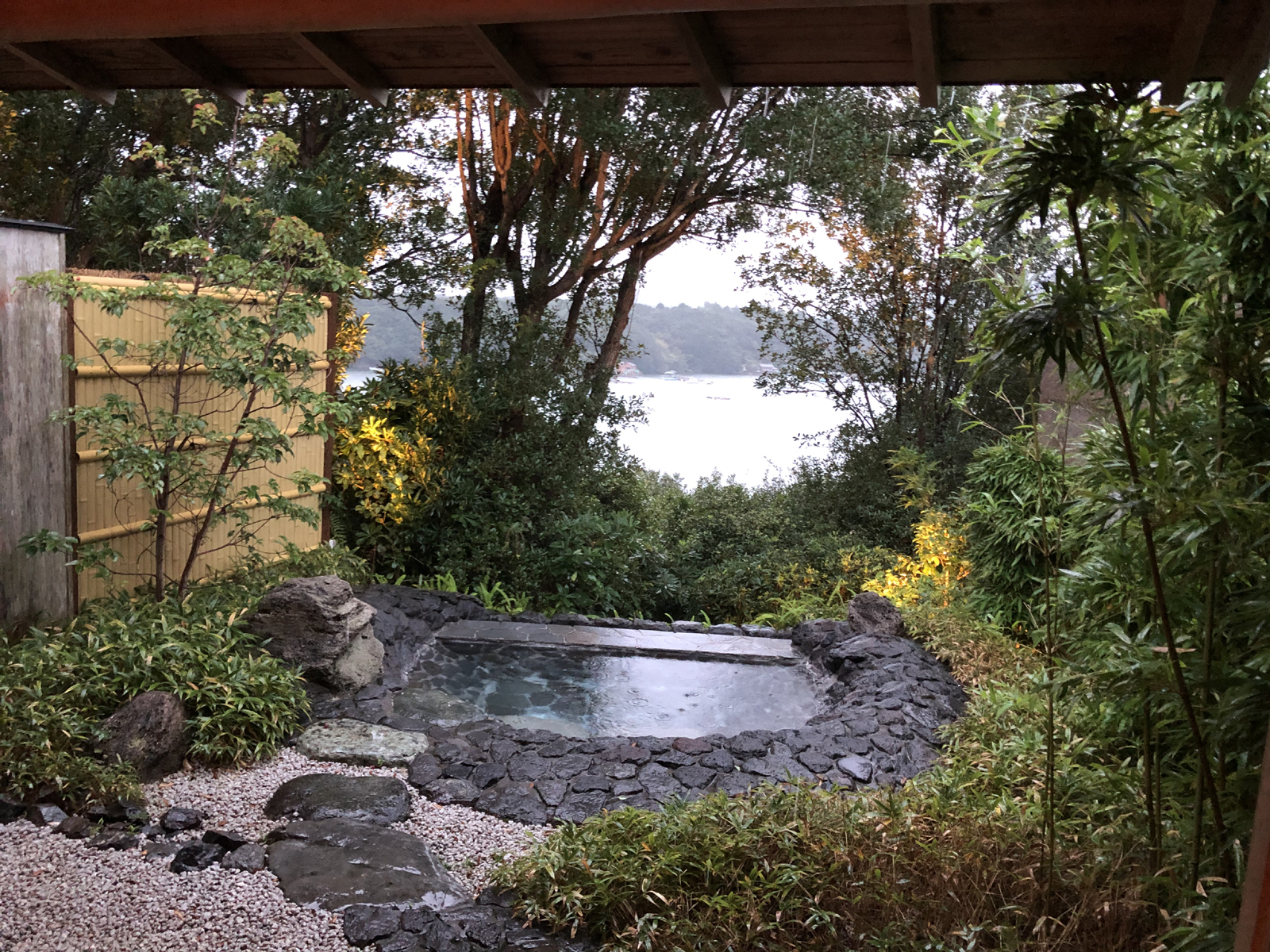
I stayed in one of their premium suites, Mori no Ichi (forest one). Many ryokans have in-room onsen, but the first thing I noticed here were the two lavish hot spring tubs: in-house hinoki (cypress) and the open-air bath stretching toward Ago Bay. It makes you feel like you’ve lost yourself in a mystic land of Monet or an ukiyo-e painting. It was raining during my stay, and the only sounds were the chanting of precipitation hitting the water, rocks and leaves and some occasional sounds of boats passing by in the distance.

The suite has a spacious living room, twin beds, a private terrace and garden, occupying 100 square meters. Organic amenities are impeccable while free wi-fi, a flat-screen TV, humidifier and espresso machine are readied, plus a CD player with an in-house compilation of soothing classical tunes.
All baths are sourced from Ise-Shima Kashikojima Onsen — a hypnotic, alkalescent, cold mineral spring. As I soaked myself in the warm water, it felt like everything toxic washed away from both inside and out. The carbonated water used for the in-house bath is said to increase one’s metabolism, mitigate muscle pain, and help the blood flow three times smoother than that of normal water. My back ache that had been bothering me for a few months miraculously subsided after soaking myself a few times. My skin was ever so softer.
Heavenly is not a misused word when it comes to a spa treatment in the “land of gods.” Basaratei’s organic spa brand Aranya Spa by Sundari is from the U.S. I tried “Aroma body treatment using medical-grade oil (60 minutes for ¥18,000).” Every treatment room has a tent just big enough for one person to sit and warm up in a foot bath and get a foot scrub. On the heated bed, my therapist started from my legs and back to get the blood flowing along the lymph, then turned me over for a decollate massage, and ended with a head massage. Aranya means holy land as well as god of forest. My stiff body was softened and my soul replenished surrounded by lush greenery and nature. Something about the location made me feel like I had been through a holy experience.
Complimentary dinner and breakfast are served in private rooms in the restaurant Sakanahen gazing over the koi pond. The exquisite dinner course is recommended to match the choicest seafood with flavors of ji-zake, or local sake.

Nine-course dinner
The perks of picking the freshest catch of seafood is dedicated to Ise-shima, also known as Miketsukuni (land of divine offerings). Sakanahen has just recruited a new chef who worked at a prestigious restaurant in New York City. His avant-garde approach takes the traditional bounty of nature to a new level.

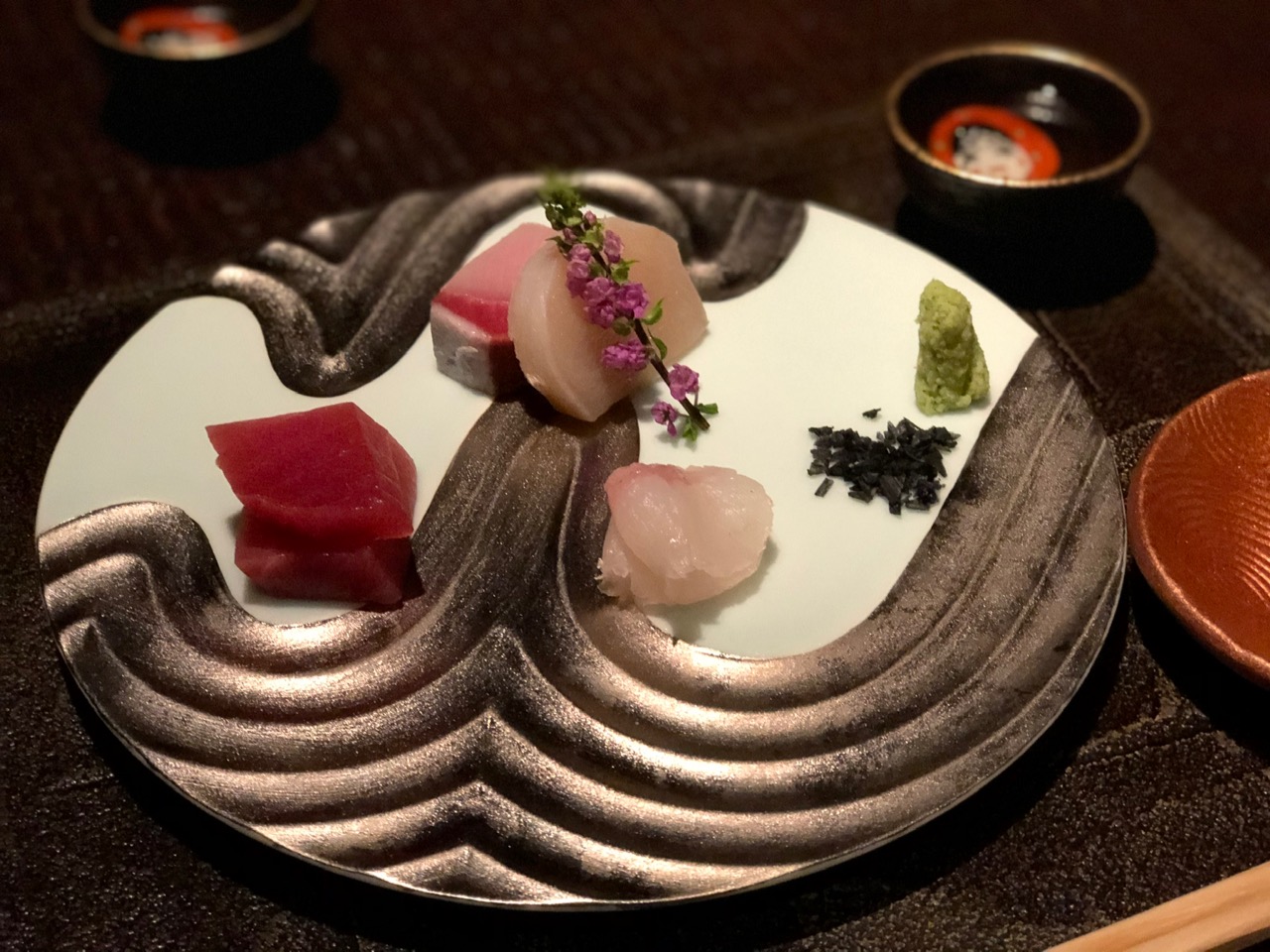
I had the nine-course Tsuyutsuki (Dew Moon) which is a parade of local ingredients including suppon (soft-shelled turtle), Ise lobster, matsutake mushroom, Mikumano beef, conch shell, rice seasoned with pearl adductor, and two kinds of eye striking deserts. (It actually adds up to an 11-course meal.) Suppon was recently found naturally breeding in a pond nearby, so the locals decided to benefit from this rare delicacy.
It was a first-time extravagant treat for me to taste suppon and matsutake together in a soup bowl. A colorful plate of edible flowers and local vegetables was a staggering surprise and a tingler especially for women. The local kiki-zake (tasting) set of Tabika, Takijiman, and Yamahai Junmai Hachihei goes well with each course.

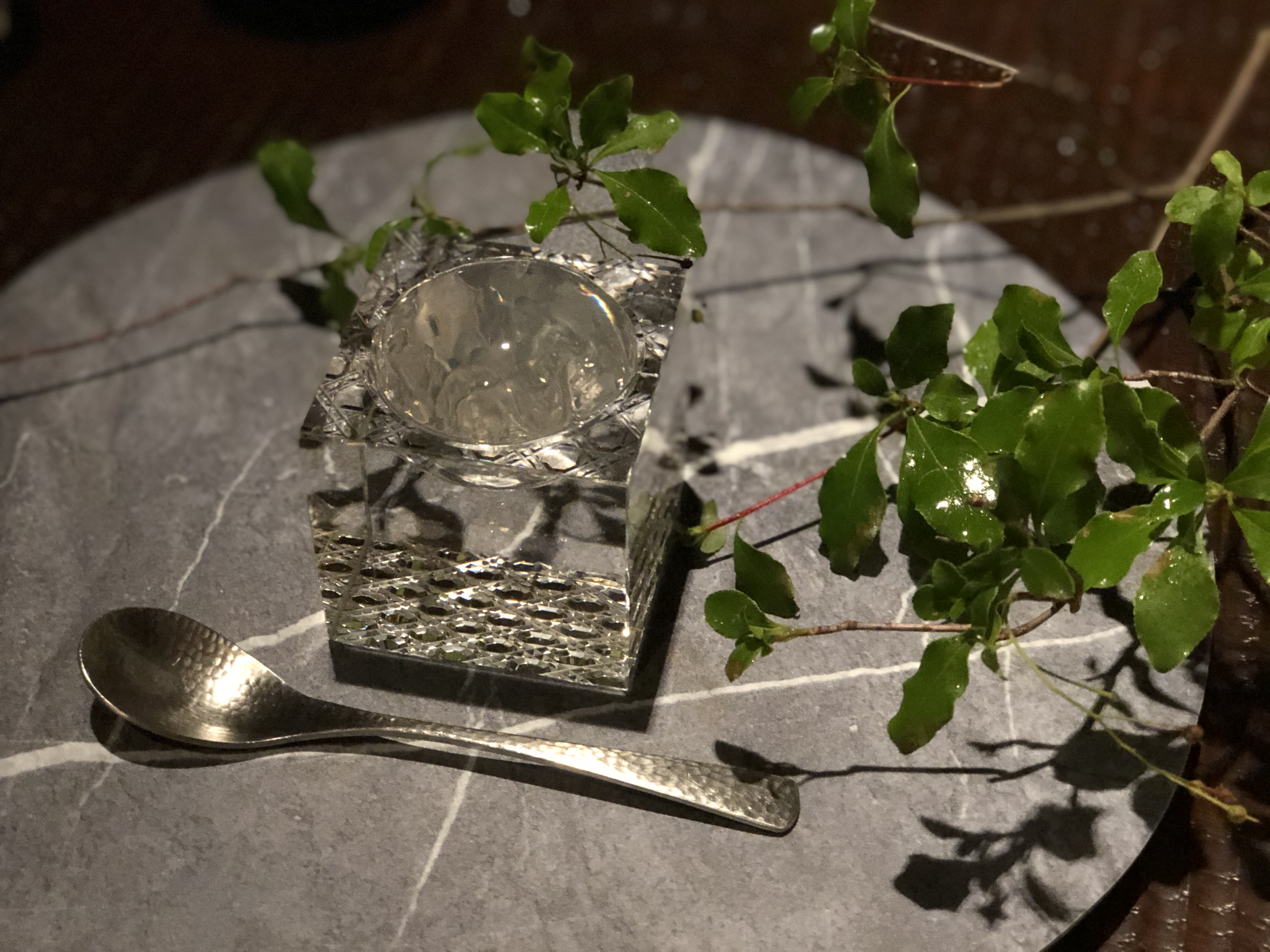
After a very fulfilling dinner, a staff member awaited me at the entrance to provide souvenirs of fresh milk in a glass bottle, boiled local eggs, senbei (rice crackers), onigiri (rice balls), and seasonal fruit to take back to my room. It’s a part of their hospitality since there are no convenience stores nearby.
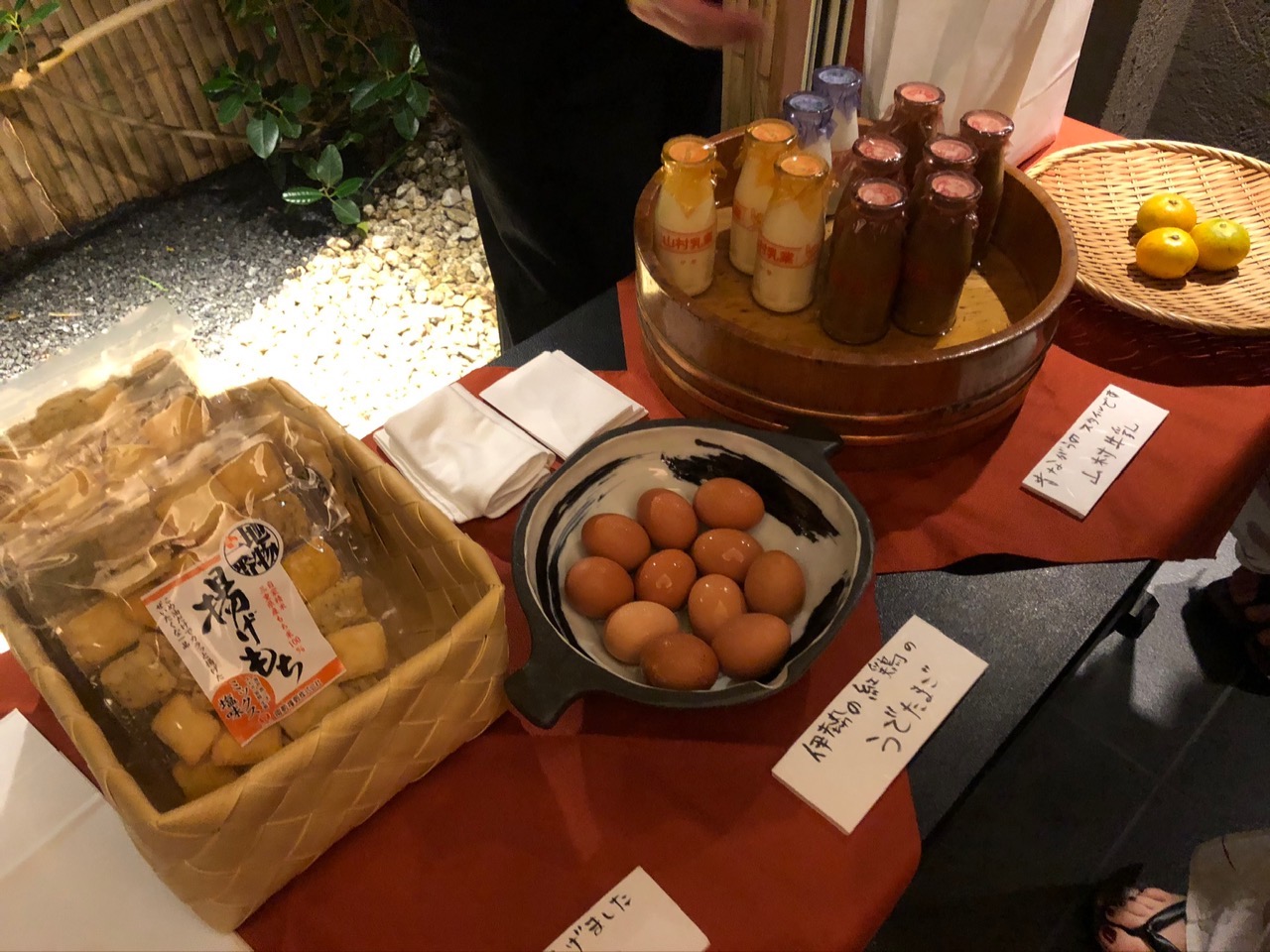
In-house facilities include three open-air private baths. One of these is called Ten no Kagami (Mirror of Heaven) and is shaped like a swimming pool — the tub is so big you can literally swim in it — and it's quite a romantic setting with a panoramic view of Ago Bay. The rectangular bath reflects the sky from different angles.
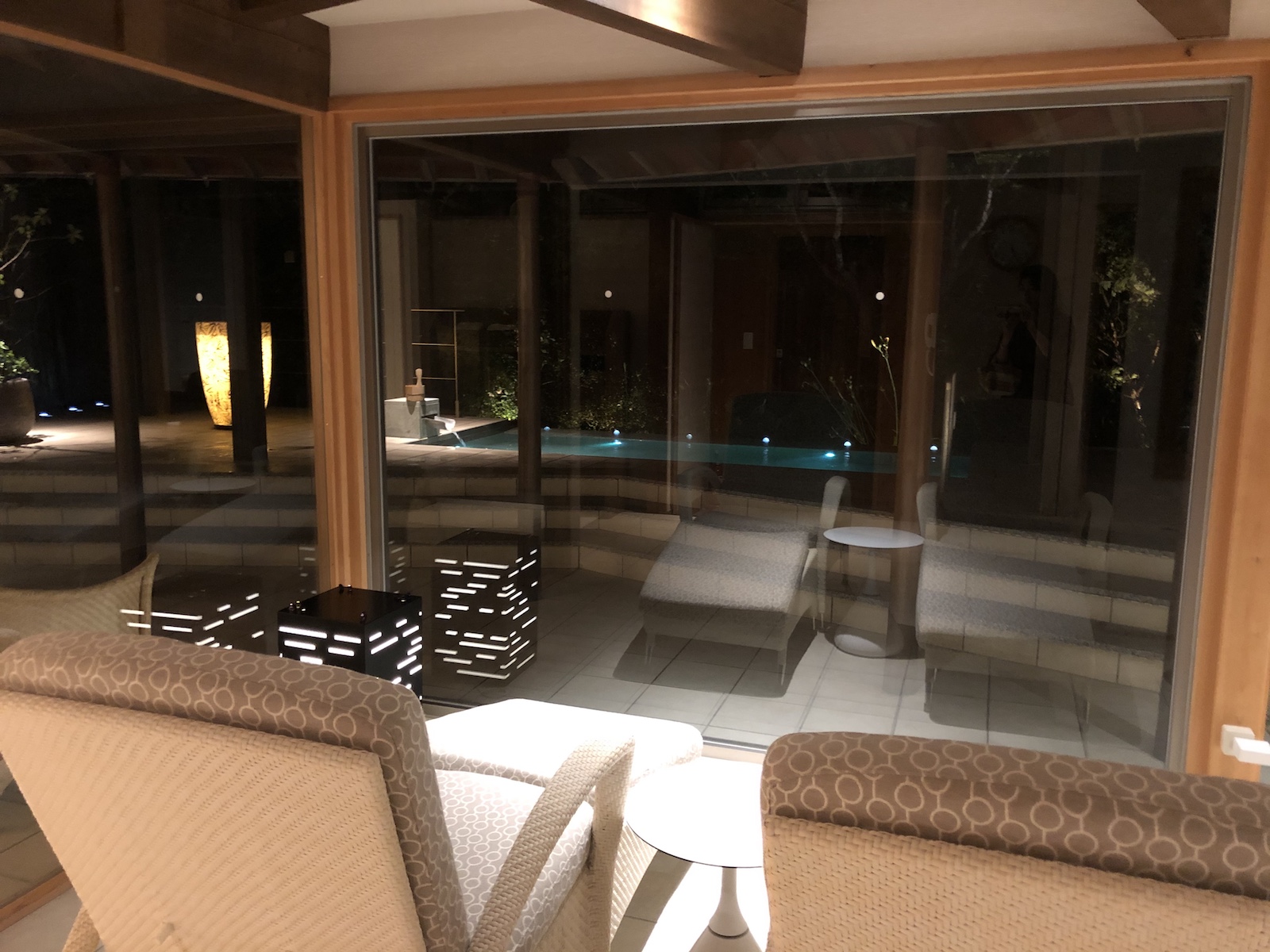
A spacious library lounge Toki no Ie Aoi (House of Time) is where guests can wind down and enjoy free nightcaps and refreshments, cheese and dried fruits while listening to relaxing music on a sinking sofa.

I should also note the heated stone foot sauna (Ashigaru) placed in each premium suite. The negative ions emitted from these stones have a similar effect as soaking in a hot spring just by placing your feet on the stone mat. I spent a good hour looking back on the day, looking forward to the next adventure, digesting the delicious food, and listening to remedying music before tucking into bed.

Breakfast was superlative with freshly made Koshihikari rice from a contracted farm in a pot cooked with charcoal (cleans the water and makes the rice tastier) exclusively for myself served with immaculate timing. The king of fish, Kinmedai (Splendid Alfonsino) was so tasty, I couldn’t stop my hashi (chopsticks). Sashimi in the morning may seem a little too much for some guests, but here they provide lightly cooked bonito and boiled octopus for that part. Savory steamed egg custard is a delight and minced fish ball miso soup warms up the body and soul. Last but not least, TKG (raw egg on rice) with freshly laid egg is a mind blower. I could taste the sweetness of the rice even more. All 10 colorful dishes give you the energy to start a soul-seeking day. A Western-style breakfast is also available.
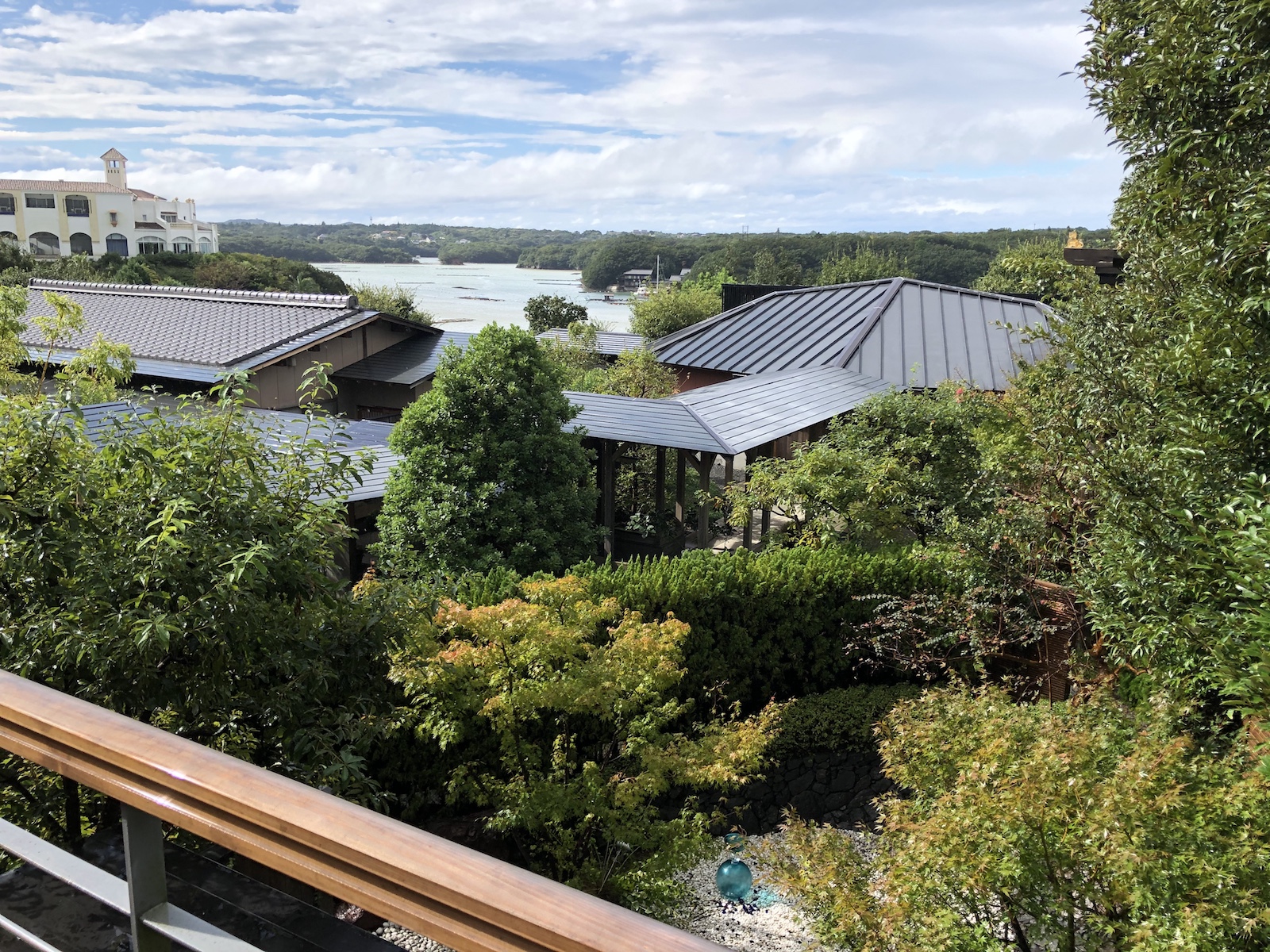
Island hopping
There are various excursions on the coastline and island hopping is one them. A boat ride is perhaps the easiest way to get about, but if you drive, every bridge you cross means you are hopping islands.
I first visited Shinju no Sato (Home of Pearls). The calm water of Ago Bay makes it perfect for cultivation of pearls. I tried my hand extracting a pearl oyster and making a necklace.
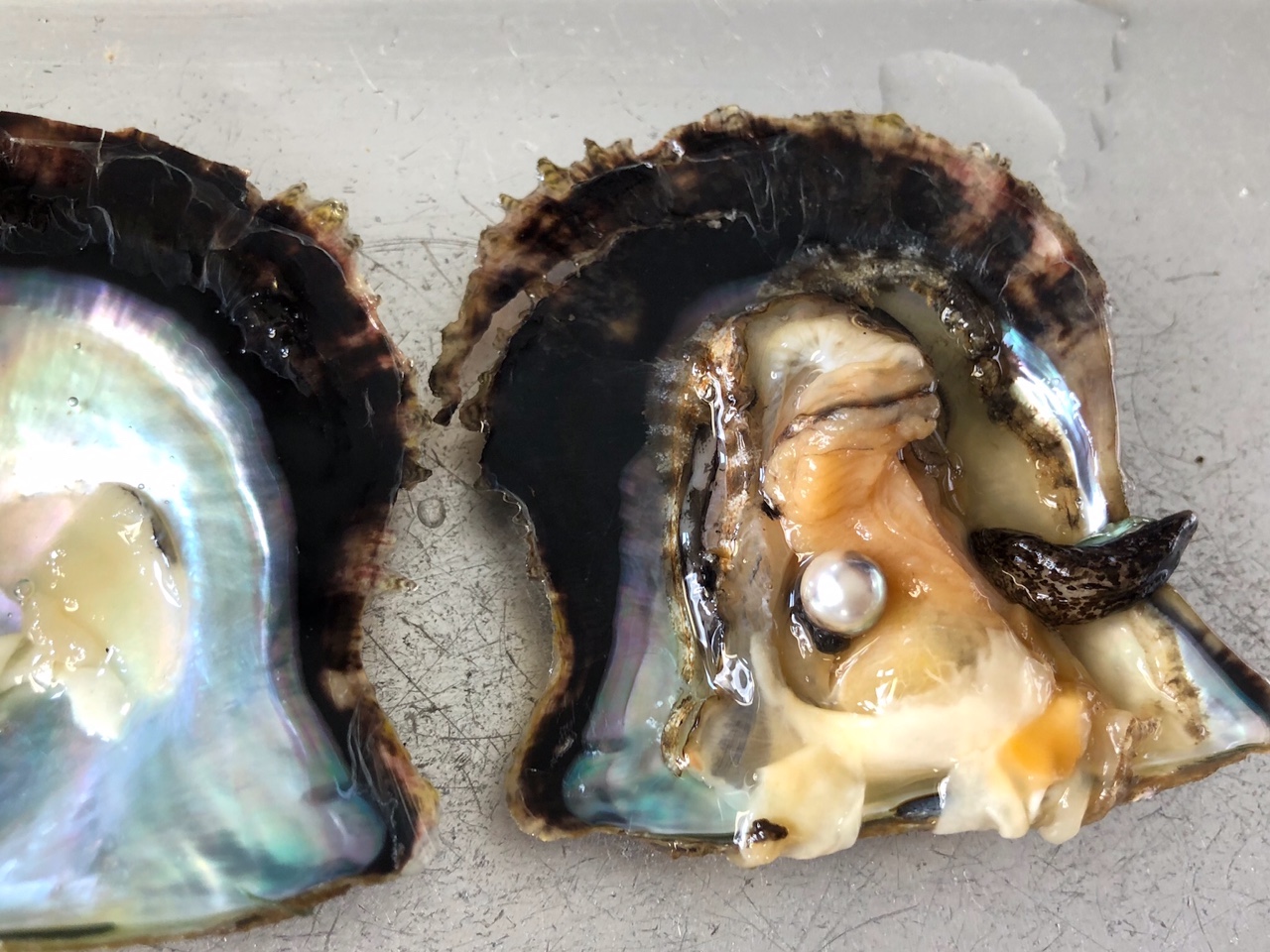
The quality of the harvested pearls from the vicinity is famous worldwide; yet it costs only ¥1,500 for one pearl at this local facility. Test your luck and bring home a beautiful pearl along with great memories.
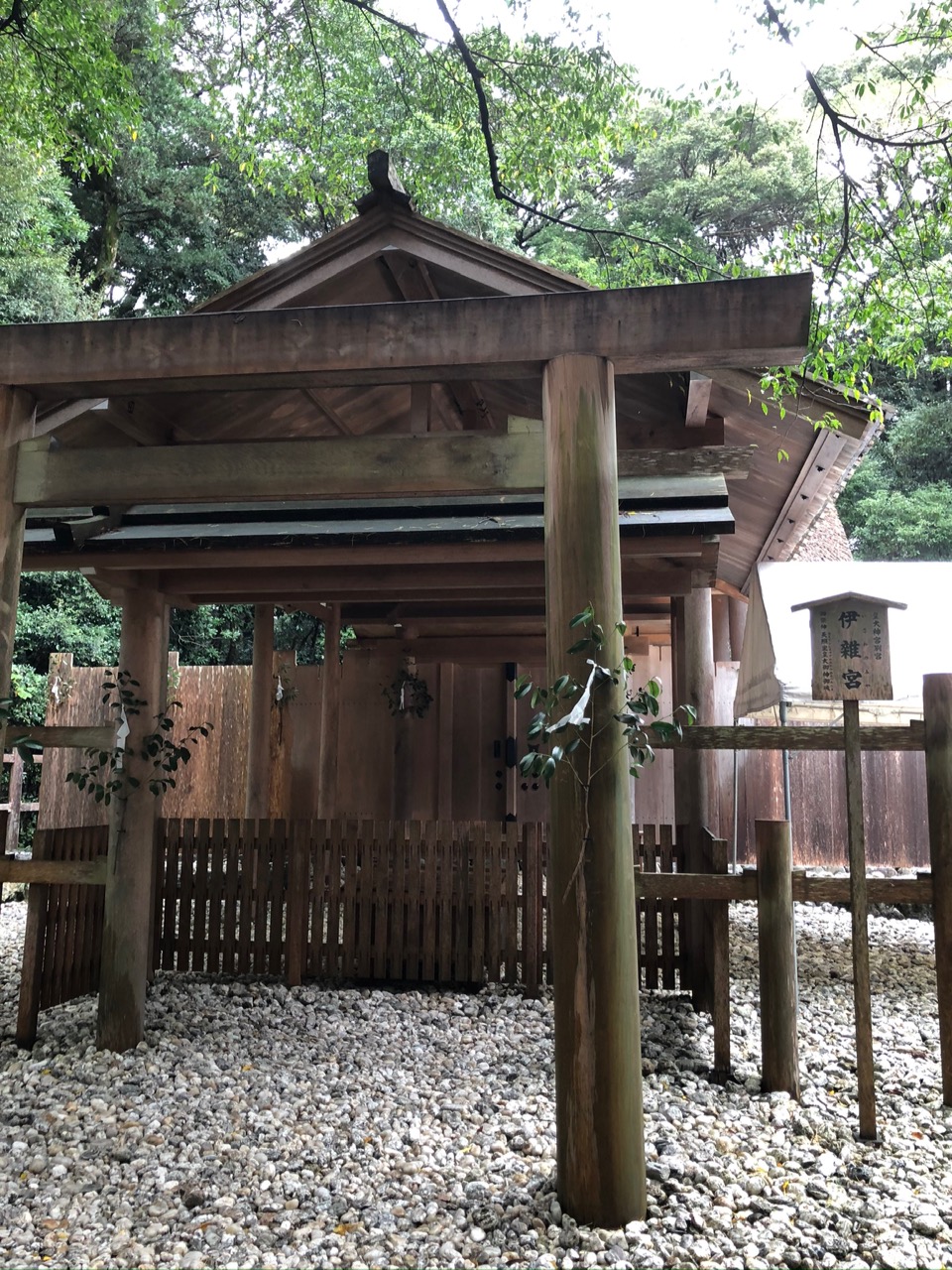
One of the auxiliary shrines under Naiku (the Inner Shrine) of Ise-Jingu Shrine is a five-minute drive from Basaratei. Izawanomiya is the subordinate shrine of Ise-Jingu and has a special status. The Ontauesai festival held every June is designated as a national important intangible cultural heritage. My visit was just after the enthronement ceremony for Emperor Naruhito, and staff were cleaning up after the post-enthronement festival.

Unagi, or eel, is one of Japanese people’s most favorite delicacies, and the eel on rice bowl from the traditional auberge Nakaroku in front of Izawanomiya is renowned for this particular dish. The eel, packed so densely in the bento box, leaving no space for rice to be seen, is soft and tender yet crispy on the surface, submersed in irreproachable teriyaki sauce. I buried my face in it on the platform of Kashikojima Station while waiting for the next express train.
Making time for a visit to the main Ise-Jingu Shrines, or the “Soul of Japan” during your stay is something you should do even if you have been there before. It’s a 40-minute drive or about half way to Nagoya on the Kintetsu line. Only those who have stepped inside the gate of this holiest shrine have felt the difference from any other shrine. Learn about the elaborate rituals that have continued for about 2,000 years, and you will have a deeper understanding of Japanese culture.
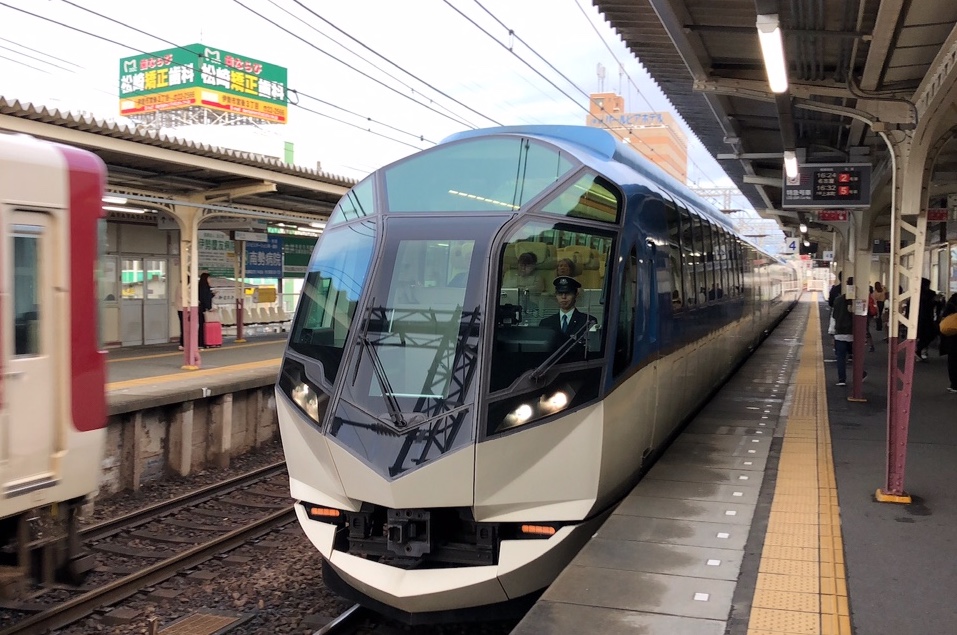
I highly recommend you to board the Shimakaze if you have the chance to grab tickets. This is a premium limited express on the Kintetsu line that only runs occasionally once a day. Emperor emeritus Akihito and Empress emerita Michiko enjoyed this ride just before the abdication. On-board offerings include an original Shimakaze bento box and a cafe car. The premium reclining leather seats, with an air pressure massage function, instantly made me fall into a deep sleep.
My trip had been one of the most luxurious, comforting, and relaxing ever in my entire life. I would love to do it once again very soon. The power spot, as Kashikojima has been proclaimed, gave me energy and the feeling of cleansing. All in all, it was an amazing experience.
Teisho Basaratei
Website: https://www.basaratei.com/en/index.html
Address: 3618-74 Ugata, Agocho, Shima City, Mie Prefecture
Tel: 0599-46-1189
Access: Two hours and 10 minutes from Kintetsu Nagoya Station on Limited Express.
Free pick-up service (five-minute drive) is available from Kashikojima Station upon request in advance.
Shinju No Sato
Address: 1125-88 Koshika, Shima-cho, Shima City, Mie Prefecture
Izawanomiya Shrine
Address: 374 Kaminogo, Isobe-cho, Shima City, Mie Prefecture
Directions: Three-minute walk from Kintetsu Kaminogo Station
Kintetsu Premium Express Shimakaze
Website: https://www.kintetsu.co.jp/senden/shimakaze/
© Japan Today Take our user survey and make your voice heard.
Take our user survey and make your voice heard.















2 Comments
Login to comment
Bob Downs
Wow! Now this is my kind of vacation!
Laurence Brown
I would love to see and feel this cultural experience. Enjoyed reading the whole article.